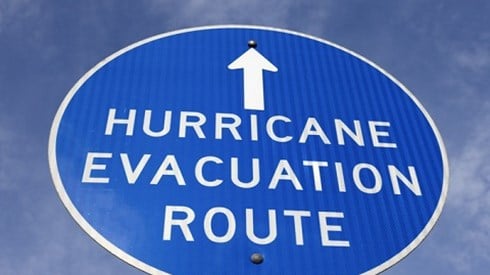Natural Catastrophes Just One Factor Fueling Hard Insurance Market

March 27, 2023

Natural catastrophes resulted in $275 billion in economic losses worldwide in 2022, of which $125 billion were covered by insurance, according to a new sigma report from the Swiss Re Institute.
The 2022 insured loss was the fourth-highest 1-year total on sigma records, Swiss Re says.
At the same time, property-catastrophe (re)insurance rates rose to near 20-year highs at January 2023 renewals, according to the sigma report, titled Natural Catastrophes and Inflation in 2022: A Perfect Storm. The increase in property-casualty rates continued a trend that began in 2018, Swiss Re notes, as natural disasters continue to cause significant losses around the world.
The (re)insurance rate gains of recent years coincide with that trend of heightened natural catastrophe activity and increased losses that started in 2017, Swiss Re says. The insured losses in 2022 affirm a 5 percent to 7 percent annual growth trend in place since 1992, according to the March 22, 2023, report, based largely on the increased severity of losses from primary and secondary peril events.
Annual insured losses of $100 billion have become standard, Swiss Re notes. The largest loss event in 2022—Hurricane Ian—resulted in an estimated insured loss of $50 billion to $65 billion. Meanwhile, other large loss events during the year included floods in Australia and South Africa, hail in France, winter storms in Europe, and heat waves in Europe, China, and the Americas.
But other factors are contributing to the increase in (re)insurance rates as well, the Swiss Re report suggests.
"Beyond the natural catastrophes themselves, other factors such as the impacts of economic inflation and financial market losses have also fed into market hardening," Swiss Re says. "An additional contributing factor has been the need for more discipline in the modeling and underwriting of secondary perils in particular. This has led to mismatches of risk assessment and actual exposures and, in turn, insufficient market capacity."
Even as the frequency and severity of natural catastrophes increase, the Swiss Re report suggests that factors other than the physical destructive force of natural catastrophes are causing recent high losses. The main drivers of those losses, according to the report, are economic growth, the accumulation of asset values in exposed areas, urbanization, and rising populations, often in regions that are exposed to natural perils.
"We expect that these and the evolution of a range of present-day risk factors like climate change effects and, of late, inflation, will continue to drive losses higher," the report says, noting that economic inflation averaged 7 percent in advanced markets and 9 percent in emerging economies in 2022.
"Initially sparked by pandemic-induced supply chain disruptions and large monetary and fiscal stimuli, soaring food and energy prices due to the war in Ukraine have compounded inflation pressures," Swiss Re says. "The effect of high prices has been to increase the nominal value of buildings, vehicles, and other insurable assets, in turn pushing up insurance claims for damage caused by Mother Nature."
Inflation has had the most immediate impact on the construction sector, Swiss Re says, with increased costs for materials and labor driven by shortages resulting in higher claims to cover the cost of building repairs. In the United States, the report says, the aggregate replacement cost of buildings in 2022 was up an estimated 40 percent since the beginning of 2020.
Increased natural catastrophe losses—and shortfalls in industry estimates of those losses—highlight the need for an improved understanding of all the risk factors at play, the report says.
While the (re)insurance industry has long monitored primary perils, that hasn't always been the case for secondary perils, Swiss Re says, and the losses associated with those secondary perils have been growing for a number of years.
"There is a need for greater discipline in the monitoring of the loss-driving secondary peril exposures and industry sharing of related findings," Swiss Re says. "Lack of granular exposure data can also hinder understanding of all present-day risks."
The report notes that the rapid changes in vulnerabilities to hazards demand shorter update cycles of data sets and models in order to reduce risk accumulation and the underestimation of loss trends.
Ultimately, Swiss Re says it expects the current hard (re)insurance market to continue, driven by the combination of increased demand for coverage and higher values of insured assets as a result of inflation.
In addition, there are (re)insurance supply-side stresses contributing to the hard market, the report says. Uncertainties around risk trends are constraining (re)insurance industry capacity, while industry capital has fallen in response to rising interest rates. In addition to the capacity shortages, 6 years of weak results in property underwriting have reduced (re)insurers risk appetites, Swiss Re says.
"In the face of higher financing costs given interest rate rises, some capacity providers have become more cautious with respect to the potential for misalignment of risk assessment and loss experience," Swiss Re says. "In our view, as higher exposures encounter shrinking risk appetite, momentum for rising prices, higher retentions, and tighter terms and conditions will likely continue."
March 27, 2023





